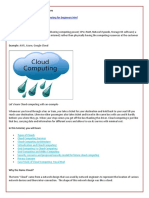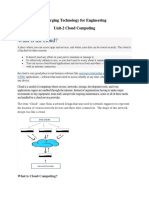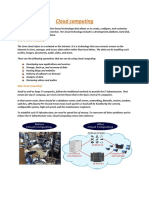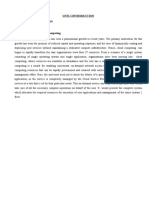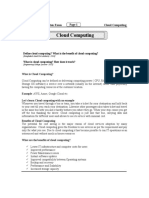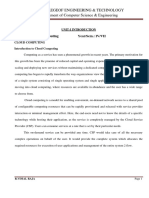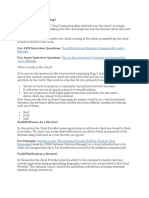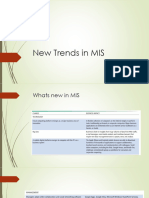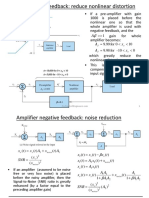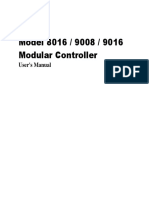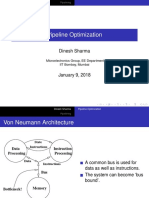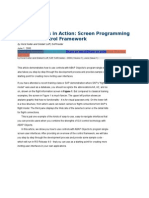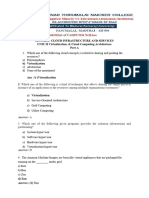0% found this document useful (0 votes)
48 views14 pagesCloud Computing
Cloud computing is the practice of storing and accessing data and services over the internet, rather than on personal computers, providing on-demand availability of computing resources. It offers various service models, including SaaS, PaaS, and IaaS, along with different types of clouds such as private, public, and hybrid. Key benefits include cost savings, improved performance, and reduced maintenance, while also raising concerns about security and privacy.
Uploaded by
newfreefireworldCopyright
© © All Rights Reserved
We take content rights seriously. If you suspect this is your content, claim it here.
Available Formats
Download as PDF, TXT or read online on Scribd
0% found this document useful (0 votes)
48 views14 pagesCloud Computing
Cloud computing is the practice of storing and accessing data and services over the internet, rather than on personal computers, providing on-demand availability of computing resources. It offers various service models, including SaaS, PaaS, and IaaS, along with different types of clouds such as private, public, and hybrid. Key benefits include cost savings, improved performance, and reduced maintenance, while also raising concerns about security and privacy.
Uploaded by
newfreefireworldCopyright
© © All Rights Reserved
We take content rights seriously. If you suspect this is your content, claim it here.
Available Formats
Download as PDF, TXT or read online on Scribd
/ 14

